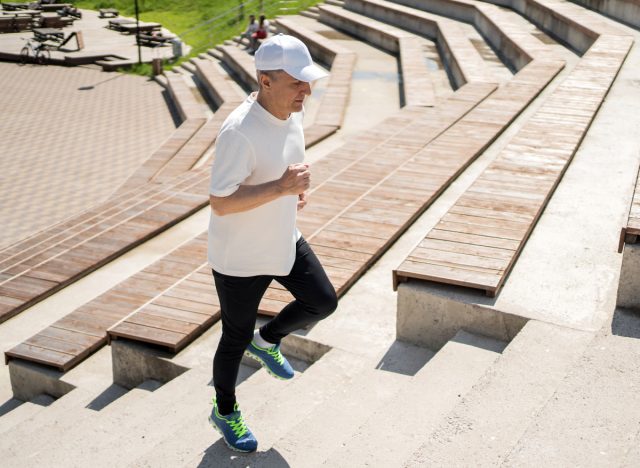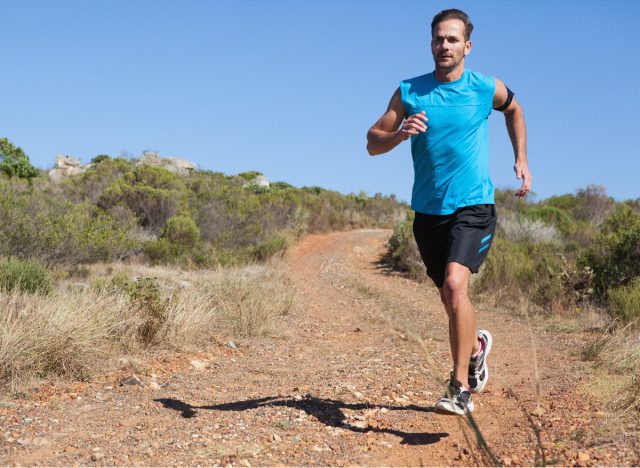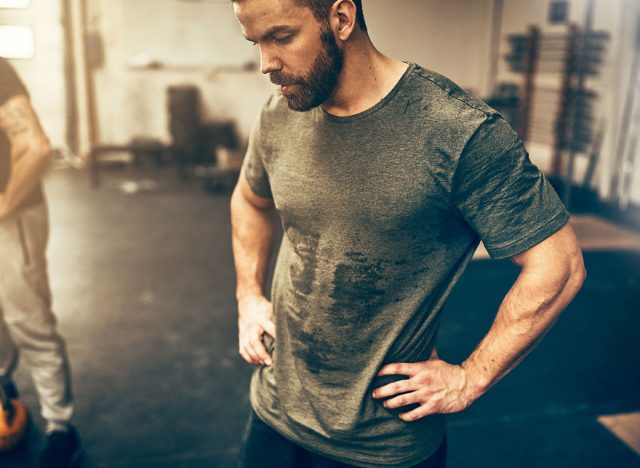5 Signs Your Heart and Lungs Are in Top Shape, According to a Trainer

Cardiovascular fitness is the foundation of endurance, stamina, and heart health. When your cardiovascular system is in top shape, everything feels more manageable, whether you're chasing your kids around, climbing a flight of stairs, or crushing a workout. But how do you know if your cardio fitness is actually where it should be?
You don't need a lab test or fancy equipment to get a read on your heart and lung health. Your body gives you clear signs when things are working well. If you check off most of the signs below, your cardiovascular fitness is likely solid. If not, no worries—there are plenty of ways to improve it.
The Importance of Good Cardiovascular Fitness
Cardiovascular fitness is the key to a long, healthy, and active life. A strong heart and efficient lungs mean your body can deliver oxygen to your muscles more effectively, allowing you to move longer and recover faster. Good cardio fitness isn't just about performance in the gym—it directly impacts your overall well-being. It reduces the risk of heart disease, lowers blood pressure, improves brain function, and even helps regulate stress. Simply put, the better your cardiovascular fitness, your quality of life is better.
Sign: You Can Climb Stairs Without Feeling Winded

One of the simplest cardiovascular fitness tests is how you feel after climbing a few flights of stairs. If you can ascend without gasping for breath or feeling like your legs are made of concrete, that's a great sign. It means your heart and lungs efficiently deliver oxygen to your muscles, allowing them to work without fatiguing too quickly. On the flip side, if stairs leave you doubled over, it might be time to incorporate more endurance-based activities into your routine.
Sign: Your Resting Heart Rate Is Low and Stable

A lower resting heart rate is a direct indicator of good cardiovascular health. Adults' average resting heart rate falls between 60 and 100 beats per minute, but well-conditioned individuals often have rates closer to 50 or even lower. This is because a strong heart pumps more blood with each beat, requiring fewer beats per minute to do its job. Checking your resting heart rate in the morning before getting out of bed is an easy way to track improvements in your cardiovascular fitness over time.
Sign: You Recover Quickly After Exercise

One of the best ways to gauge cardiovascular fitness is how fast your heart rate returns to normal after intense exercise. If your heart rate drops significantly within one or two minutes post-workout, your cardiovascular system functions efficiently. A well-trained heart and lungs can quickly clear metabolic waste and deliver oxygen to recovering muscles, reducing fatigue and improving overall endurance. If your heart rate stays elevated for an extended period after exercise, it may indicate that your cardiovascular system needs some improvement.
Sign: You Can Sustain Moderate to High-Intensity Exercise

You're in good cardiovascular shape if you can maintain a steady jogging pace, cycle at a challenging resistance, or keep up with a high-intensity workout without needing frequent breaks. Endurance and stamina are clear signs of strong heart and lung function. Your body can efficiently use oxygen and manage energy demands over an extended period. If short bursts of activity leave you completely drained, consider adding more steady-state cardio or interval training to build your aerobic base.
Sign: Your Heart Rate Stays in the Right Zones During Workouts

A well-conditioned cardiovascular system allows you to push through workouts without your heart rate skyrocketing too quickly. If you can maintain a steady pace in the moderate-intensity zone (roughly 60-70% of your max heart rate) for an extended period or hit high-intensity bursts without completely maxing out, your cardio fitness is solid. On the other hand, if your heart rate spikes too fast or struggles to recover between intervals, it's a sign that your endurance could use some work. Monitoring your heart rate during exercise can give you valuable insight into how efficiently your cardiovascular system performs.
Best Ways to Improve Your Cardiovascular Fitness
If you're looking to boost your cardio fitness, consistency is key. The good news? You don't have to spend hours on a treadmill to see results. Here are some of the best ways to build a stronger heart and lungs:
- Mix Up Your Cardio Workouts: Alternate between steady-state sessions (like jogging, cycling, or rowing) and high-intensity interval training (HIIT) to improve endurance and power.
- Incorporate Strength Training: Lifting weights with minimal rest between sets keeps your heart rate elevated, adding a cardio component to your workout.
- Increase Workout Duration and Intensity Gradually: Progressively challenge your body by extending workout times or increasing intensity in small increments.
- Make Daily Movement a Priority: Activities like brisk walking and stair climbing can contribute to cardiovascular health outside of structured workouts. Be creative and thoughtful with your movement, and take advantage of opportunities!
- Track Your Heart Rate: Using a heart rate monitor helps you stay in the right zones for endurance, fat burn, and peak performance.









